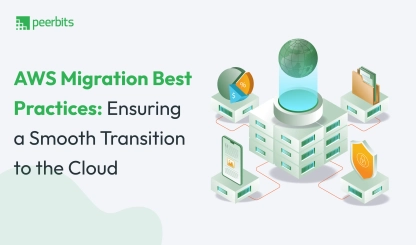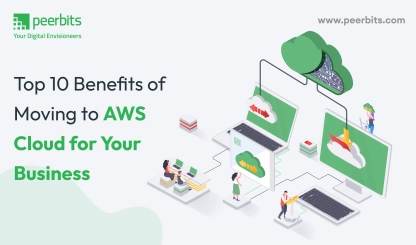The globe is buzzing with a variety of AIs these days. To keep up with this increasing race of AI revolution, IT companies are adopting these technologies at an enormous rate.
However, with new technologies comes unfathomable amounts of data that many traditional servers fail to manage. Based on Osterman's research the world creates 2.5 quintillion bytes of data every day. Isn’t that huge? That’s when cloud services emerge as a helping hand.
Based on a Precedence report, the global cloud services market size peaked at $454.20 billion in 2022 and it is expected to reach $2192.54 billion by 2032. Such a large consumer base signals only one thing- Cloud computing is going to be a massive IT buster & you can’t just take it for granted.
Let’s understand all about cloud consulting. Explore its role, processes, benefits, case studies to prove its worth, and how to choose the right cloud consulting partner for your company that can help you unleash its full potential. Without further ado let’s begin.
Understanding cloud computing
In simple terms, cloud computing involves offering IT services such as servers, storage, databases, networking, software, analytics, and intelligence over the cloud or in layman’s terms ‘over the internet’. Unlike the traditional method of owning and maintaining physical data centers and servers, with cloud computing, businesses can access these technologies from a cloud service provider. It supports faster innovation, flexible resources, and scalable upgrades.
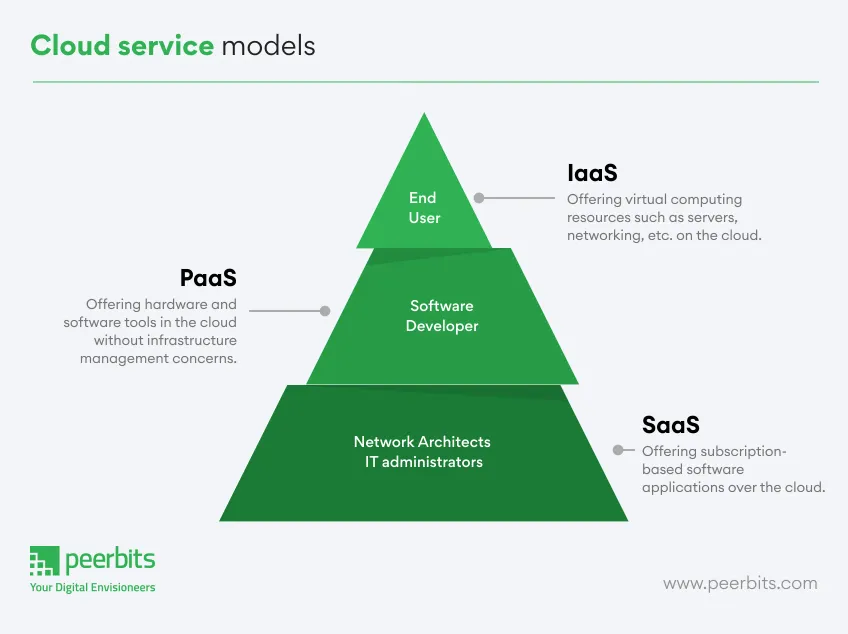
1. Infrastructure as a Service (IaaS):
In this model, the provider is responsible for offering virtual computing resources such as servers, storage, and networking onto the cloud. You can rent these resources on-demand, paying only for what is used. It suits all such companies who want complete control over their infrastructure without the burden of physical maintenance
2. Platform as a Service (PaaS):
The PaaS model offers hardware and software tools on the cloud. Developers can build applications without worrying about the infrastructure management. However, it is not limited to infrastructure tools. Developers can also access database management systems, and middleware needed for application development in this mode.
3. Software as a Service (SaaS):
The SaaS model delivers software applications over the Internet, with a subscription attached. Users can access these applications via web browsers, eliminating the need for local installations. Businesses looking to minimize upfront costs and access the latest software without dealing with updates and maintenance usually prefer this SaaS.
Surely, adopting new technologies is a way forward, but what are the ongoing hurdles you can encounter without the cloud? Let’s check.
Challenges without cloud computing
Without cloud computing, businesses face three major challenges as follows:
1. Increased IT costs: The on-premises infrastructure management involves substantial capital investment in hardware, software, and skilled personnel.
2. Limited scalability: The traditional infrastructure is unable to scale quickly based on demand spikes. It leads to potential performance issues and lost revenue.
3. Lack of agility: Developing and deploying new applications on traditional infrastructure is time-consuming. It also hinders a company’s ability to innovate and respond swiftly to market changes.
Understanding these models, and challenges will help you make informed decisions about cloud adoption. To make the migration more secure many also refer to popular cloud consulting services for this switch.
Here’s a brief overview of cloud consulting & its set of roles involved in cloud computing.
Understanding cloud consulting: Key roles explained
Cloud consulting as the name suggests refers to guiding businesses in their cloud adoption journey. There are a variety of cloud consulting services in the market that provide expert insights and streamline cloud adoption.
Though, the key responsibilities of a cloud consultant remain similar, which include:
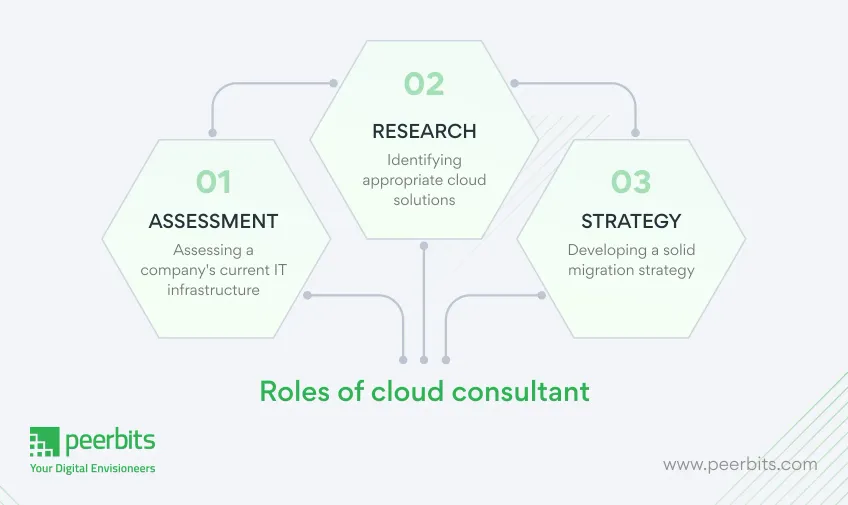
- Assessing a company's current IT infrastructure,
- Identifying appropriate cloud solutions, and
- Developing a solid migration strategy.
They also offer training to internal teams for a smoother transition to the cloud.
Now let’s understand some essential steps involved in cloud consulting that you should be involved in your cloud adoption roadmap.
Key steps in the cloud consulting process
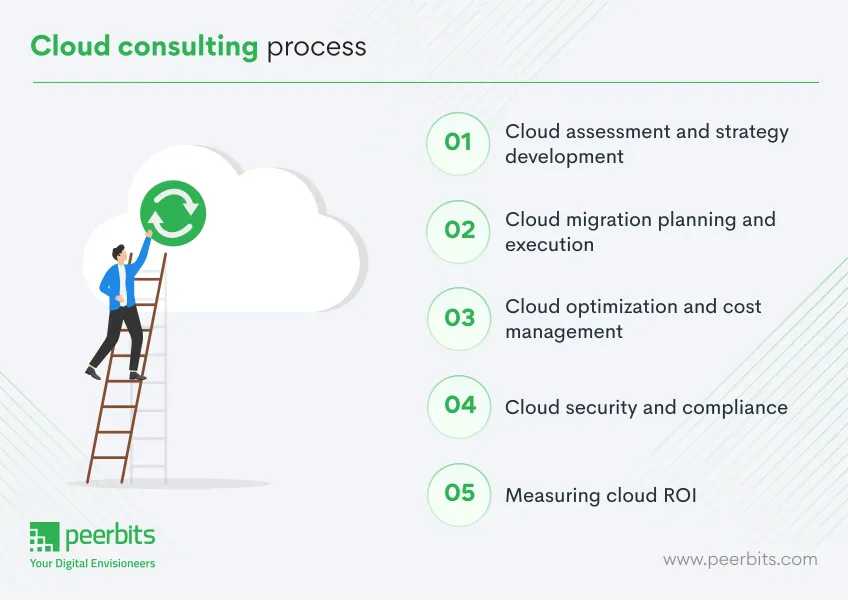
Cloud consulting involves a series of steps that assess your cloud infrastructure needs to provide a reliable strategy that can benefit your entire cloud ecosystem. Here’s a detailed insight into cloud consulting processes & and how they help in your cloud cost optimization:
1. Cloud assessment and strategy development
Cloud assessment is essential for successful cloud adoption. It's more like a blueprint plan that needs to be researched well to deliver a robust cloud solution. This process helps in:
-
Evaluating an organization’s existing IT infrastructure to determine whether they need the cloud or not.
-
Identifying gaps and opportunities to make the cloud migration more seamless.
-
Understanding the current state of the organization, to recommend the best practices for further processes.
After assessment, developing a cloud strategy means outlining the steps necessary for migration, including timelines, resources, and key milestones. It involves:
-
Identifying suitable cloud providers out of AWS, Azure, Google Cloud, and many other cloud platforms available in the market based on key factors such as cost, performance, and security.
-
Customizing cloud strategy that accomplishes your business goals, keeping the roadmap practical and effective.
2. Cloud migration planning and execution
Cloud migration works over a strategic approach where assessing migration options such as lift and shift, re-platforming, and refactoring helps in switching applications to the cloud.
Lift and shift means moving applications as-it-is to the cloud, however re-platforming includes some optimizations into the applications before switching to the cloud. Refactoring, on the other hand, requires significant changes to utilize cloud-native features.
Planning cloud migration involves a series of steps as follows:
-
Setting up a timeline, assigning responsibilities, and identifying potential risks.
-
Outlining necessary steps for testing and validation to keep the functioning of migrated applications normal.
-
Ensuring that data is securely and efficiently transferred to the cloud, with minimal risk of loss or corruption.
-
Streamlining the data migration process, data integrity, and security by utilizing best practices and cloud migration tools.
3. Cloud optimization and cost management
Cloud optimization and cost management play a vital role in utilizing the entire value of cloud investments. This involves:
-
Rightsizing resources (cloud resources adjustment to match the actual usage). It eliminates over-provisioning and under-utilization of an organization’s existing resources.
-
Analyzing cloud usage patterns to identify areas where costs can be reduced. It involves shutting down unused resources, optimizing storage solutions, and using reserved instances.
-
Setting up budgets, alerts, and monitoring tools for implementing cost management strategies that keep a watch over cloud spending.
-
Utilizing cloud provider tools like AWS Cost Explorer, Azure Cost Management, etc. that help in, providing insights and recommendations for cost optimization.
4. Cloud security and compliance
Without security, nothing can be approved further. That’s why cloud security and compliance are some of the most underrated processes in cloud consulting that hold its backbone. It involves:
-
Implementing security best practices, including encryption, access control, regular security audits, firewalls, intrusion detection systems, and regular vulnerability assessments.
-
Addressing data privacy and compliance regulations such as GDPR and HIPAA to avoid any future legal and financial penalties.
-
Training the staff to keep them aware of security protocols and best practices.
5. Measuring cloud ROI
All business investment always looks for it probable profits. Cloud consultants aid you in that aspect as well. They measure the Return On Investment (ROI) from cloud adoption to give you an abstract idea of the profits you can roll out through cloud adoption. For that, they identify:
-
Key metrics for cloud success such as cost savings, performance improvements, and user satisfaction.
-
Return on cloud investment. It is identified by comparing the costs of cloud adoption against the benefits. Both direct costs, such as cloud service fees, and indirect costs, such as reduced downtime and improved productivity are included in this calculation.
-
Cloud environments are reviewed regularly to identify areas for improvement. It includes adopting new cloud services, optimizing existing resources, and staying updated with the latest cloud technologies.
After getting a strong grip on what cloud consultants have on their plate to work, let's have a look at the major advantages of cloud consulting that help businesses grow.
Benefits of cloud consulting for your business
Here are the 3 major benefits of cloud consulting with which businesses can plan a scalable future:
Cost-efficiency: Cloud consulting impacts immensely on server investment. Large capital expenditures on hardware and software are easily eliminated once cloud servers are put to line. On top, businesses also pay for what they use in the cloud, reducing overall IT costs.
Scalability: Cloud services empower you with flexibility. It can be exploited for scaling resources up or down based on demand. It also ensures that your applications can handle peak loads efficiently without any extra cost applied over permanent infrastructure.
Agility: The cloud overall supports rapid deployment of applications and services. This speed helps businesses in faster innovation. As well as you can also respond to market changes more effectively.
Cloud consulting in action: Inspiring success cases
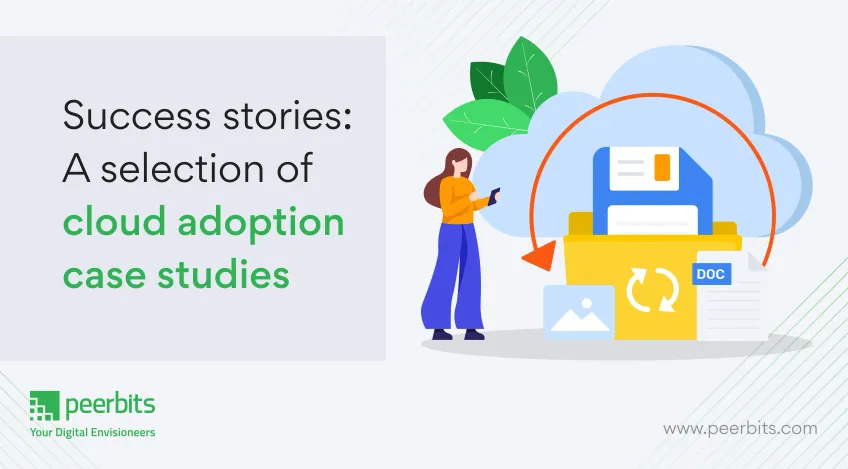
Cloud consulting plays a vital role in switching to the cloud. Here are a few success stories of cloud adoption that showcase its massive impact on infrastructure, cost, and agility. Take a look!
1. Global Care Hospital
Challenges: It is a private medical institution situated in Abu Dhabi, UAE. They faced many difficulties in accessibility and data management within the healthcare facility.
They were seeking solutions that would allow the system's accessibility at all times. They also had to cater to remote workers who were not present personally in the main building. Therefore, accessibility was a huge issue for the organization.
Impact: By utilizing cloud infrastructure solutions, and utilizing advanced Virtual Desktop Infrastructure (VDI) solutions through a cloud service, the hospital was able to elevate its processing power. They even experienced impressive enhancements in their data management capabilities.
2. McDonald's
Challenges: McDonald's an enormous food chain giant encountered challenges in their digital evolution and wanted a scalable and efficient cloud infrastructure.
Impact: This American hamburger restaurant chain, used to serve 69 million customers each day. By utilizing cloud provider services, turned itself into a digital giant where users were able to beat performance targets by up to 66 percent and complete 8,600 transactions per second via its point-of-sale (POS) system. Now that’s what you call a clear win!
3. BookMyShow and Minfy Technologies
Challenges: BookMyShow, a renowned online ticketing platform for movies, plays, and concerts struggled with its on-premise servers which were usually overprovisioned in handling peak traffic volumes.
They were seeking a solution where they could reduce their technical debt and create a more elastic, cost-effective IT architecture.
Impact: Through a strategic partnership with Amazon Web Services (AWS) and engagement with Minfy Technologies, an AWS Premier Consulting Partner, BookMyShow successfully migrated to the cloud. It resulted in the total cost of ownership being reduced by around 70%, lowered storage needs by 75%, and reduced the number of customer complaints due to a seamless functioning system.
4. Siemens
Challenges: Siemens, it would be rare that any corporate person has not heard this name in their lifetime. It is a global leader in electrification, automation, and digitization services. They faced challenges in bringing the Industrial Internet of Things (IIoT) to railways and factories and implementing AI into its cybersecurity platform.
Impact: Siemens used a variety of AWS services to facilitate their transformation. They brought IIOT to railways and factories, developing intelligent infrastructure for buildings and distributed energy systems. They also implemented AI into its cybersecurity platform.
These case studies demonstrate the challenges faced by organizations and the benefits they yield from cloud consulting services. All these qualities of cloud can be set up in a perfect set up by a cloud consulting partner. Worry not we’ve got you covered for that!
Why choose Peerbits for cloud consulting?
Selecting the right cloud consulting partner is very crucial for a seamless cloud transition. Even the initial estimation of costs & infrastructure assessment has to be done carefully to reap the maximum potential of your system over the cloud.
That’s why if you are looking for cloud consultants who understand your specific business needs and can customize solutions accordingly, then you’ve landed at the right spot.
We provide end-to-end services—from strategy development to implementation and ongoing management of everything cloud.
Our experienced cloud consultants offer numerous benefits. They offer
-
In-depth knowledge and practical insights.
-
Help in achieving cost-efficiency
-
Help in achieving compliance with industry standards,
-
Help in enhancing the overall value of your cloud investment.
Our Services
At Peerbits, we offer comprehensive cloud consulting services including :
Partner with us to power up the full potential of cloud computing for your business growth.
Wrap up
In conclusion, cloud consulting services play a pivotal role in modernizing IT infrastructure and driving business innovation. They help organizations navigate the complexities of cloud adoption, optimize costs, enhance security, and ensure compliance with industry regulations. By partnering with experienced cloud consultants, businesses can leverage expert guidance. As well as with tailored strategies and ongoing support, cloud consulting services are the powerhouse of the cloud that keeps you competitive and pushes you to achieve long-term success in the ever-evolving digital landscape.


